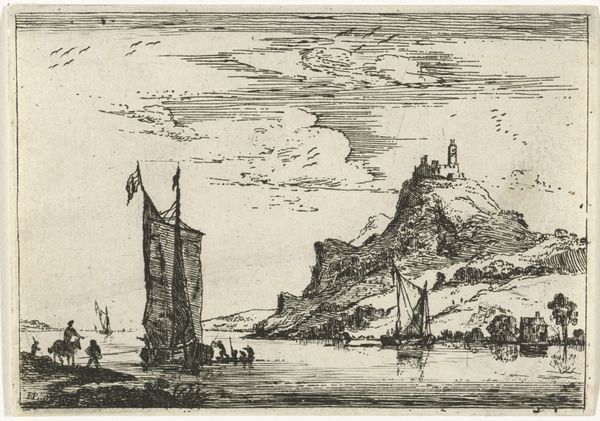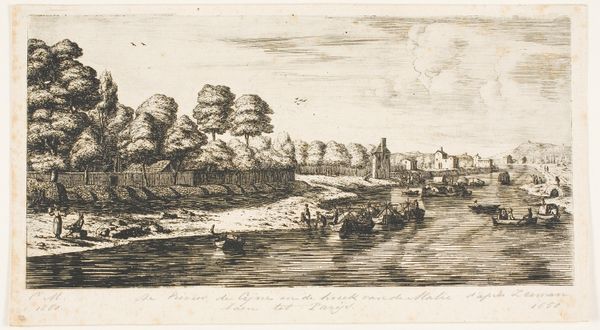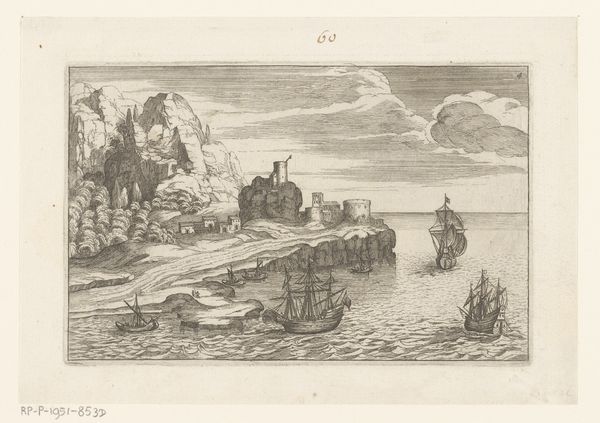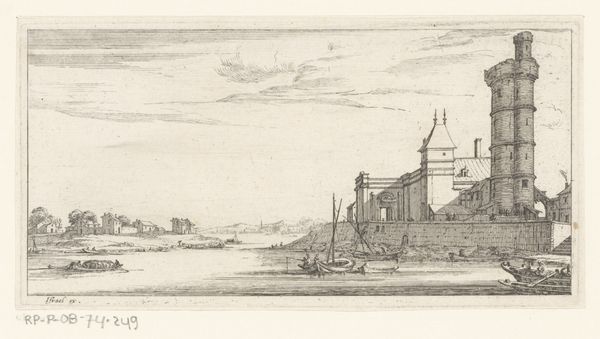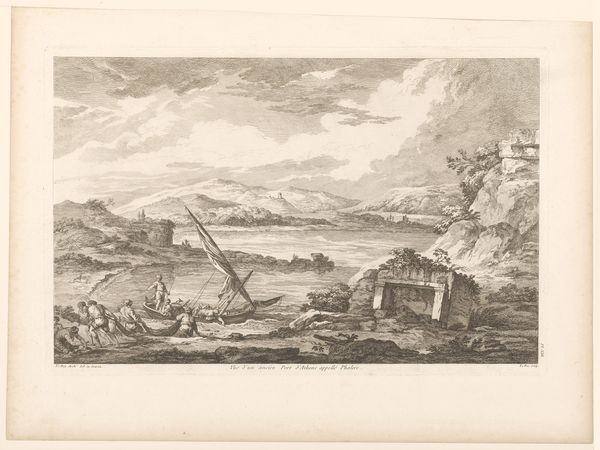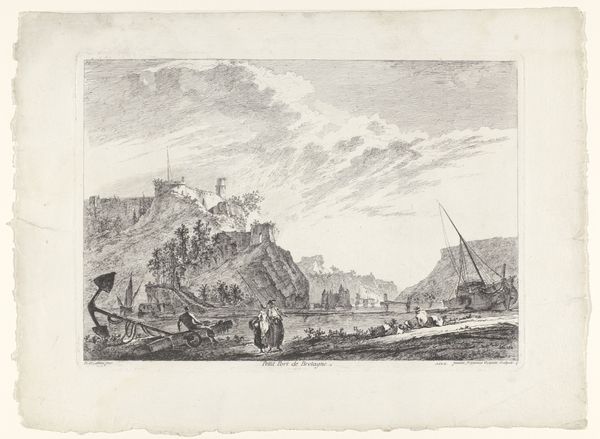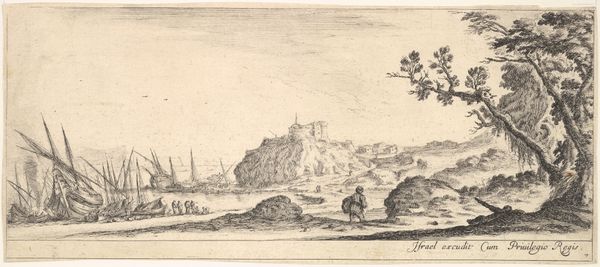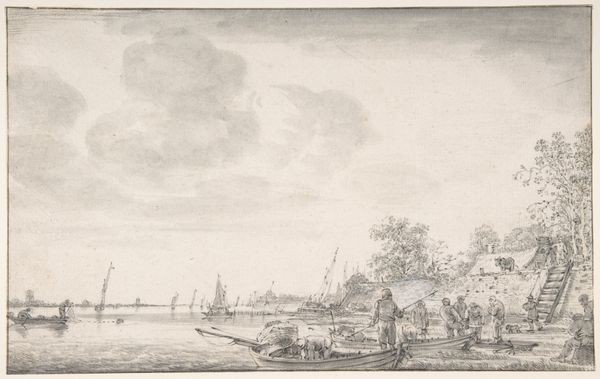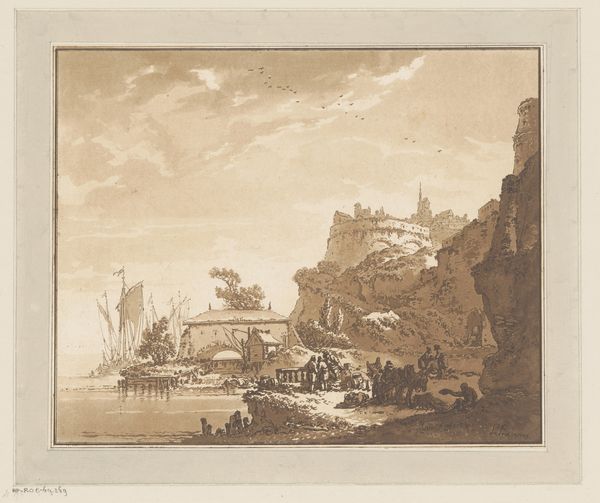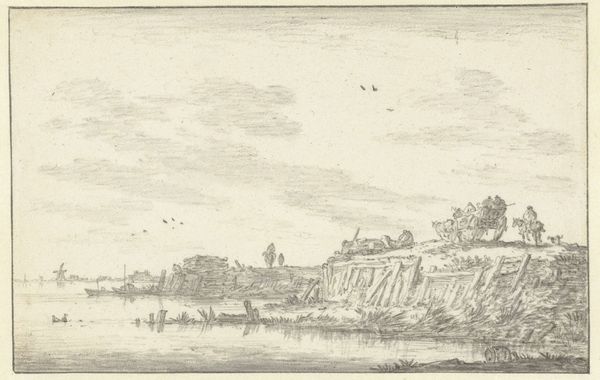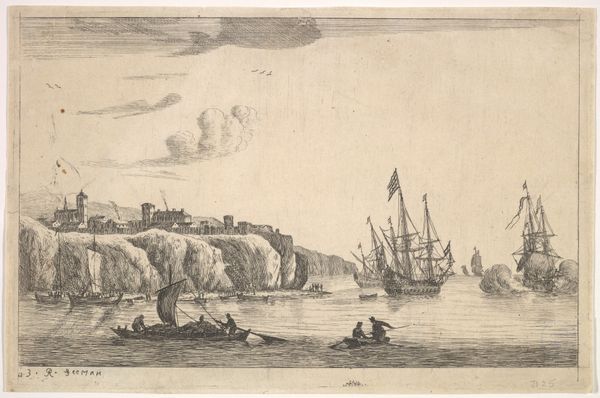
Plate 8: A the bow of a galley at left and another galley at right, seen from behind, two rowboats in center, a hill with a fortress in the background, from 'Various landscapes' (Divers paysages) 1636 - 1646
0:00
0:00
drawing, print, etching
#
drawing
#
baroque
# print
#
etching
#
landscape
#
cityscape
#
history-painting
Dimensions: Sheet: 4 5/8 x 10 1/8 in. (11.7 x 25.7 cm)
Copyright: Public Domain
Editor: This is Plate 8 from Stefano della Bella’s "Various Landscapes," created sometime between 1636 and 1646. It's an etching, and depicts galleys in a harbor with a fortress on a hill in the background. The detail is incredible! What strikes me most is the contrast between the busy harbor scene and the seemingly impenetrable fortress looming above. What story do you see unfolding here? Curator: It's fascinating how della Bella uses landscape, isn't it? Consider the socio-political context: during this period, etchings and prints served a crucial public function. They weren't just decorative; they disseminated information, molded public opinion, and solidified power. Notice how the fortress dominates the composition, both physically and symbolically. Editor: So you're saying it's more than just a pretty scene? It’s intentional that the fortress is elevated? Curator: Precisely. Think about who commissioned these works, who consumed them, and what messages they were intended to convey. Della Bella likely worked for a patron invested in projecting strength and authority. The bustling harbor showcases trade and naval power, while the fortress ensures control. Ask yourself, what is the intended audience supposed to feel when viewing this? Pride? Security? Awe? Editor: That makes sense. So the seemingly simple depiction of a harbor is actually a carefully constructed statement about power dynamics? Are the ships then indicators of trade more than naval domination? Curator: The lines are often blurred. Trade relies on secured sea lanes. Military might protects the merchant vessels. It's this complex interplay of power, commerce, and defense that della Bella captures so deftly, catering to the cultural values of his time. The baroque style amplifies that idea of the "power" of the location in general. What are your takeaways after this dive? Editor: I see the print as a calculated piece of propaganda and a testament to the power of visual communication to shape perception. Curator: Exactly. Recognizing this historical and political context, the power, allows us to see these landscapes not just as scenery, but as active participants in the shaping of social realities.
Comments
No comments
Be the first to comment and join the conversation on the ultimate creative platform.
